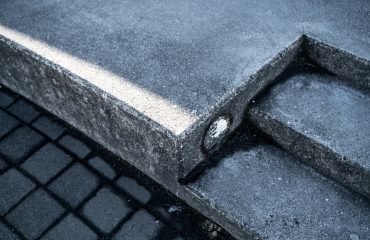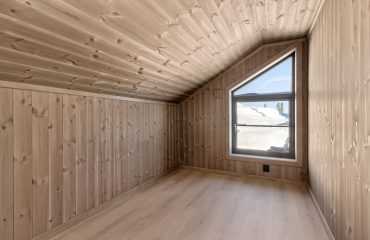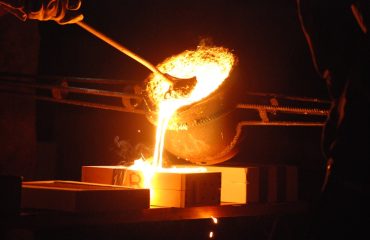Galvanized steel, a ubiquitous material in construction, infrastructure, and manufacturing, owes its widespread use to its exceptional corrosion resistance. This post delves into the science behind this remarkable property, exploring its mechanisms, applications, limitations, and comparisons with other corrosion-resistant materials. Understanding the intricacies of galvanized steel’s performance is crucial for selecting the right material for various applications.
The Science Behind Galvanized Steel’s Corrosion Resistance
The superior corrosion resistance of galvanized steel stems from the protective zinc coating applied to the base steel. This coating acts as a sacrificial anode, meaning it preferentially corrodes instead of the underlying steel. This process, known as galvanic corrosion, relies on the electrochemical properties of zinc and iron. Zinc is more electropositive than iron, meaning it readily loses electrons. When exposed to moisture and oxygen, zinc oxidizes, forming a zinc oxide layer that acts as a barrier, preventing further corrosion. This barrier protects the steel from environmental factors that cause rusting, such as moisture, oxygen, and various chemicals.
The thickness of the zinc coating directly influences the longevity of the protection. Heavier coatings offer more substantial and prolonged protection against corrosion, extending the lifespan of the galvanized steel product. The specific galvanizing process employed also impacts the coating’s quality and performance. Hot-dip galvanizing, a common method, produces a thicker, more uniform coating compared to electrogalvanizing.
Applications Where Galvanized Steel Excels
The exceptional corrosion resistance of galvanized steel makes it ideal for a wide range of applications, particularly in outdoor environments where exposure to harsh weather conditions is unavoidable. Common applications include:
- Construction: Roofing, cladding, structural steel components, fencing, and guardrails.
- Automotive: Body panels, chassis components, and exhaust systems (though often combined with other corrosion protection methods).
- Infrastructure: Bridges, pipelines, transmission towers, and highway guardrails.
- Manufacturing: Industrial equipment, storage tanks, and various machinery components.
- Household appliances: Washing machines, dryers, and other appliances with exposed metal parts.
In each of these applications, the long-term durability and minimal maintenance requirements of galvanized steel provide significant economic and practical advantages.
Limitations and Considerations of Galvanized Steel
While galvanized steel offers excellent corrosion resistance, it’s not without limitations. Understanding these limitations is crucial for appropriate material selection and design considerations:
- Hydrogen Embrittlement: The galvanizing process can introduce hydrogen into the steel, potentially leading to hydrogen embrittlement, a form of steel degradation. This is more of a concern with high-strength steels.
- Zinc Flaking or Peeling: Damage to the zinc coating, caused by scratches, abrasion, or improper handling, can expose the underlying steel to corrosion. This is why proper handling and installation are essential.
- Alkaline Environments: While generally resistant, galvanized steel can exhibit reduced corrosion resistance in highly alkaline environments.
- Specific Chemical Exposure: Certain chemicals can react with the zinc coating, potentially compromising its protective properties. Careful consideration is needed when selecting galvanized steel for applications involving chemical exposure.
- High-Temperature Applications: The zinc coating’s effectiveness can be reduced at very high temperatures, potentially leading to faster corrosion.
Comparing Galvanized Steel with Other Corrosion-Resistant Materials
Galvanized steel competes with several other corrosion-resistant materials, each with its own set of advantages and disadvantages. A comparison helps in selecting the most appropriate material for specific applications:
- Stainless Steel: Offers superior corrosion resistance in many environments but is generally more expensive than galvanized steel.
- Aluminum: Lightweight and corrosion-resistant, but may not be as strong as steel in some applications.
- Powder Coating: Provides excellent corrosion protection, but requires a smooth base surface and may be less durable than galvanizing in harsh environments.
- Paint Coatings: Relatively inexpensive but requires regular maintenance and repainting to maintain its effectiveness.
The choice depends on factors like cost, required strength, environmental conditions, and the specific chemical exposure expected.
Maintaining and Extending the Lifespan of Galvanized Steel
While galvanized steel is inherently corrosion-resistant, proper maintenance can further extend its lifespan and protect against premature degradation. Key maintenance practices include:
- Careful Handling and Installation: Avoid scratching or damaging the zinc coating during handling and installation.
- Regular Inspection: Periodically inspect galvanized steel structures for signs of damage or corrosion.
- Prompt Repair: Address any damage to the zinc coating promptly to prevent further corrosion.
- Proper Cleaning: Regular cleaning can remove contaminants that might accelerate corrosion.
By following these simple maintenance practices, you can significantly extend the service life of your galvanized steel components, maximizing their value and minimizing replacement costs.
In conclusion, galvanized steel’s exceptional corrosion resistance is a result of the sacrificial protection offered by the zinc coating. Understanding its mechanisms, applications, limitations, and maintenance requirements is crucial for making informed material selection decisions. By choosing galvanized steel wisely and implementing proper maintenance, you can ensure long-lasting and reliable performance in a wide range of applications.




